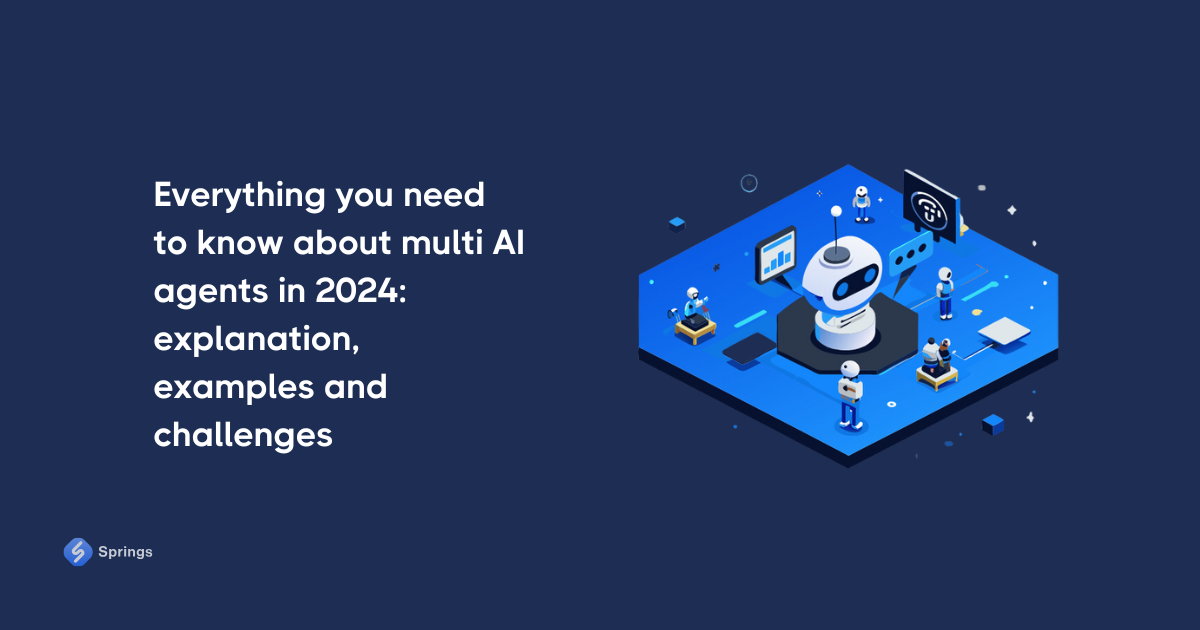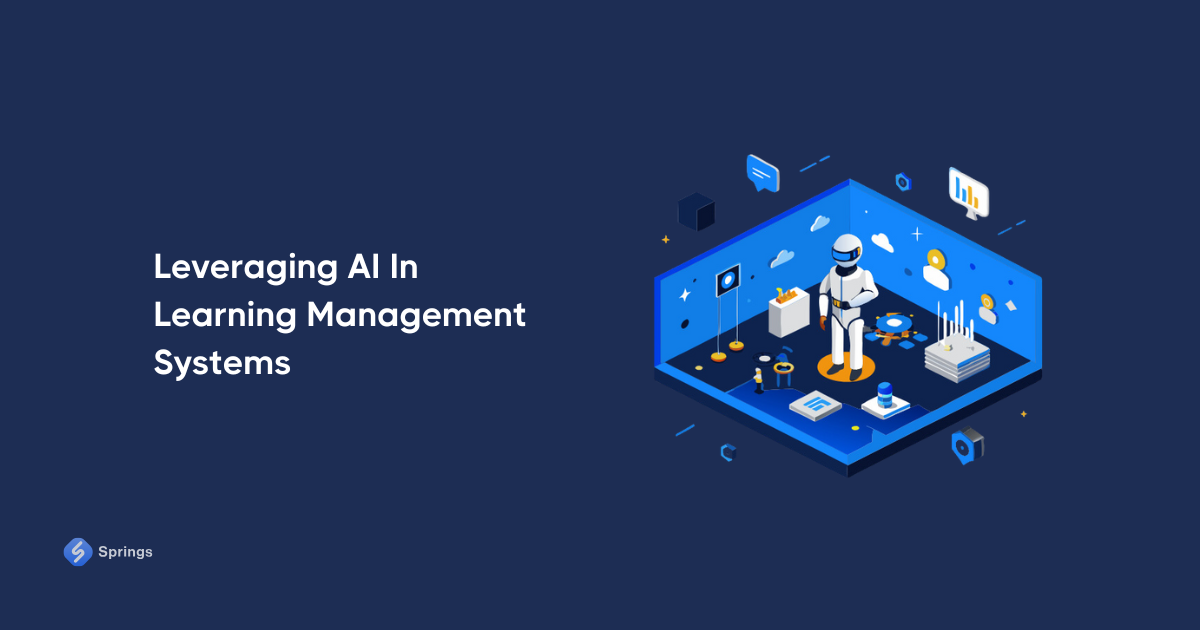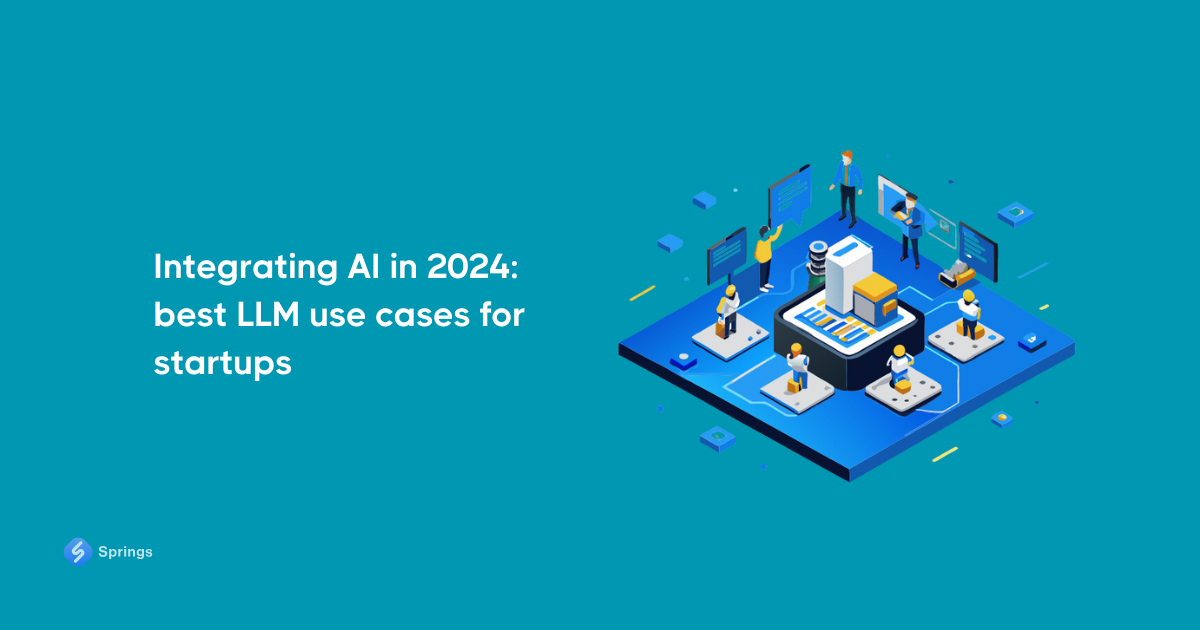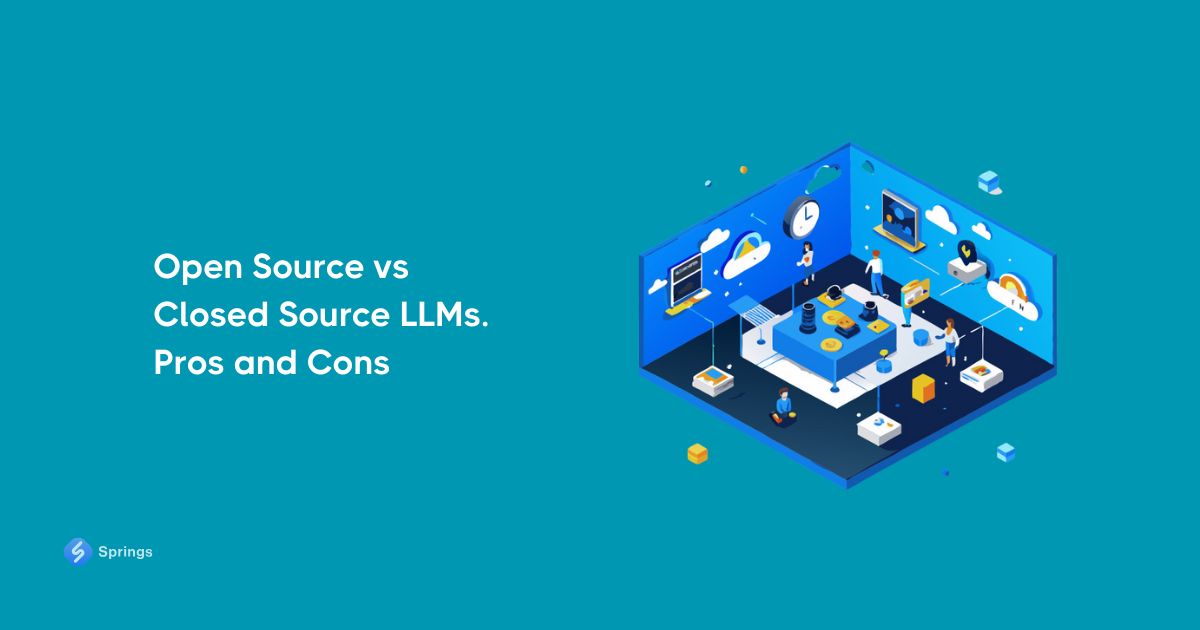Using Computer Vision In Medicine: Full Guide and Real Examples
Computer vision (CV) is a potent type of artificial intelligence technology. It helps companies bolster security measures, check the quality of products, and automate daily tasks. Computer vision is also essential in self-driving vehicles, allowing them to see and avoid road obstacles.
Recently many medical organizations in different parts of the globe began using this technology to improve various aspects of healthcare. Huge corporations like Microsoft, Intel, and IBM invest in making it more effective and versatile. We have prepared this article about using computer vision in healthcare, its main applications, real examples, and more.
Why Computer Vision Is Crucial For Healthcare
Medical doctors have been using images to detect and diagnose diseases and conditions since the first X-rays were introduced in 1896. Through the years, the medical imaging process has improved with the introduction of MRI, ultrasound, CT scan, and other types of technology. However, medical professionals can’t always accurately interpret these images.
Computer vision technology can improve the results of these medical procedures and aid healthcare professionals in their daily work. While generative AI tools help organizations handle patient appointments and surface diagnostics, CV aids professionals with daily care and other facets of this field.
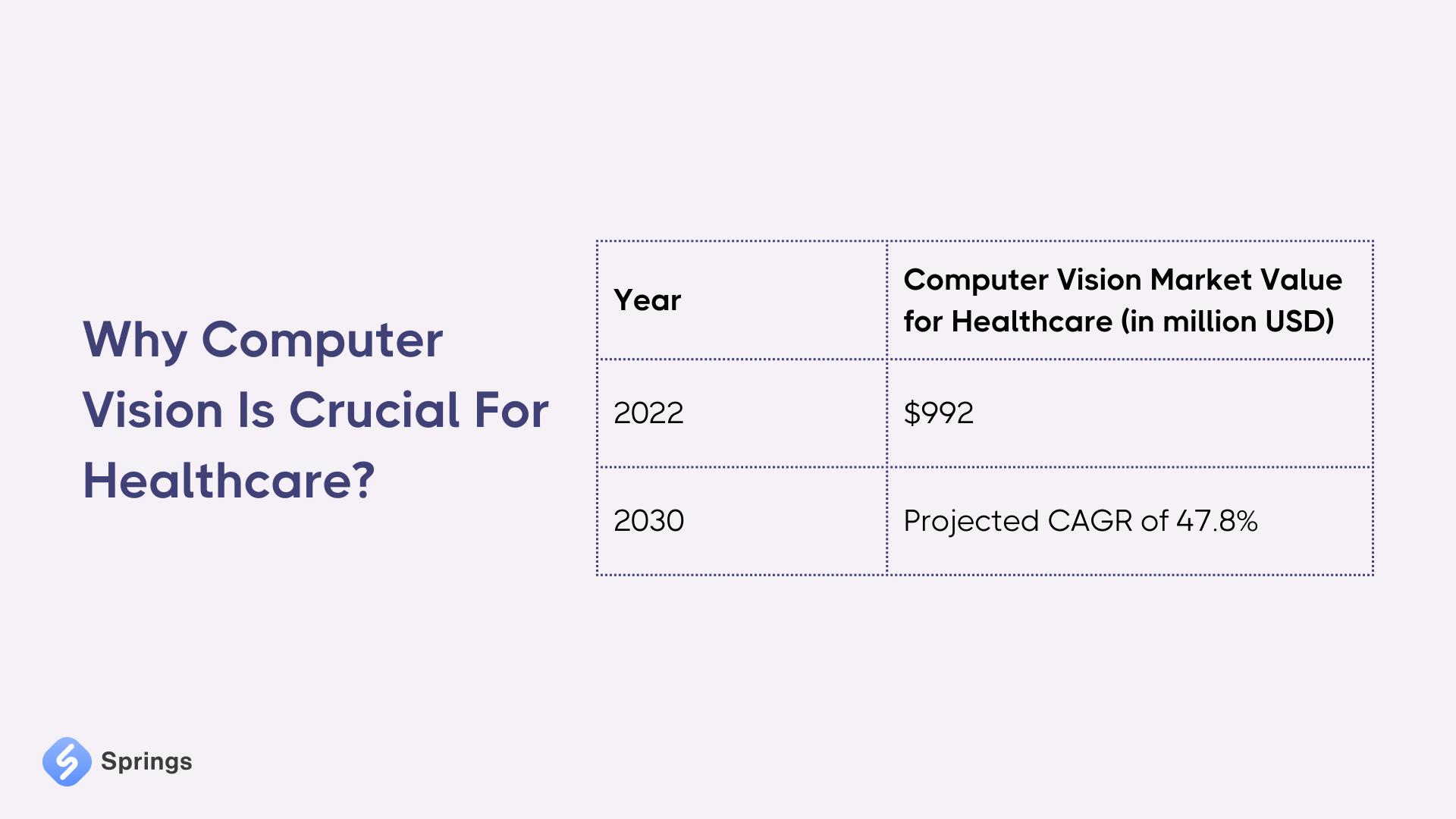
This is one of the reasons the popularity of these solutions has been blowing up since 2022. That year, the computer vision market for healthcare had a value of $992 million. By 2030, it will grow at a CAGR of 47,8%, according to Pragma Market Research. This shows investors and medical institutions have a great interest in the healthcare AI development.
Main Use Cases For Computer Vision In Healthcare
More and more organizations implement computer vision to assist with patient treatment. These healthcare applications save organizations plenty of time and effort and lead to more positive patient outcomes.
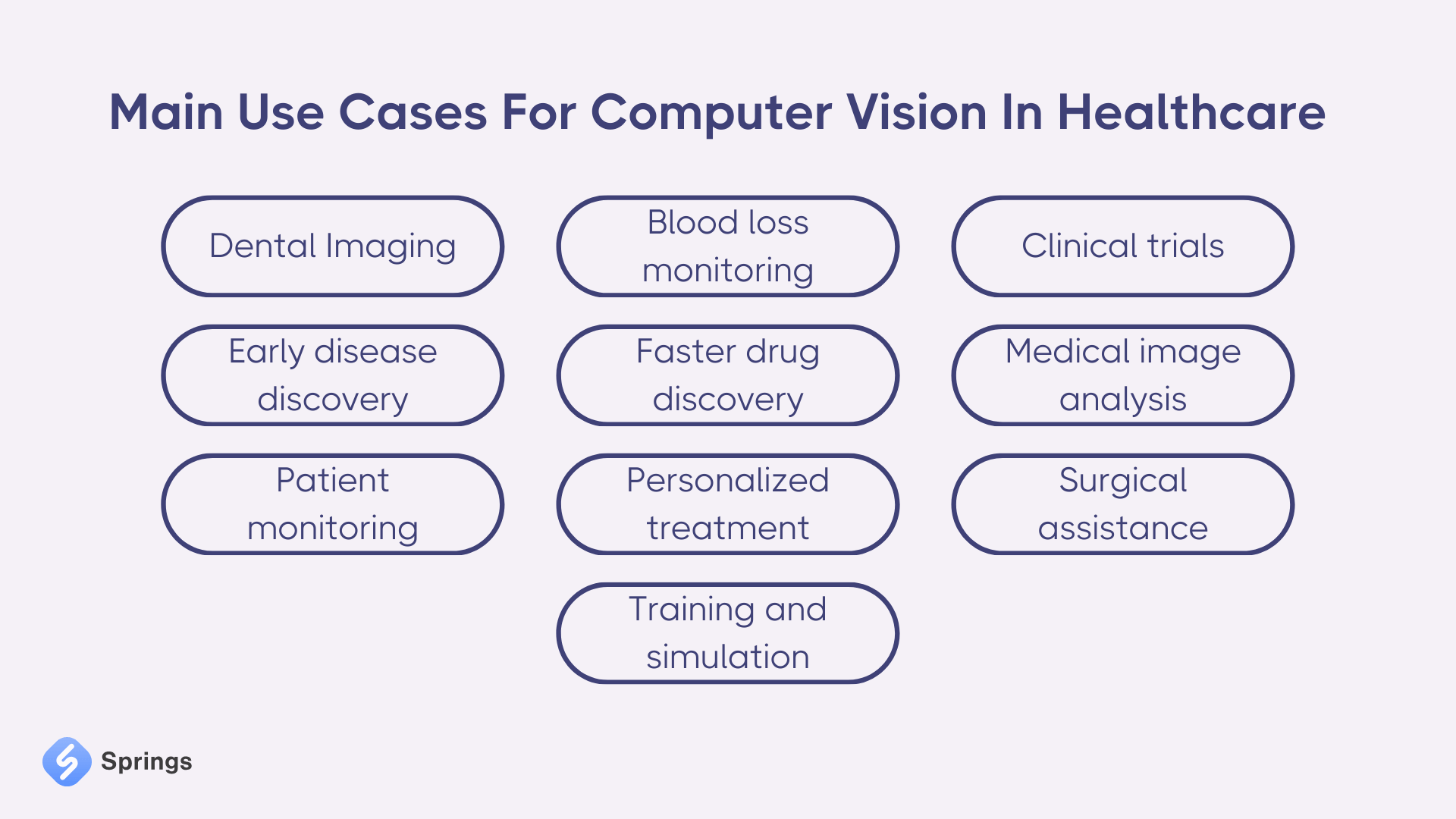
Dental Imaging
One of the best computer vision applications in healthcare deals with dental imaging. This technology helps analyze pictures to detect cavities and other dental issues. Dentists use it to plan treatments and develop more accurate and efficient diagnoses. The sooner they find out what’s wrong with the patient, the faster dentists can fix it.
Blood loss monitoring
Many healthcare organizations, hospitals, and clinics use computer vision technology to achieve great patient treatment results. AI products specializing in blood loss monitoring, like AI blood cells analyzers, prevent hemorrhages, assess blood levels, and reduce the need for transfusions. This reduces patient stay, cuts costs, and allows adequate and measured use of blood.
Clinical trials
Computer vision helps researchers run more effective trials for new drugs. Using smartphone-based apps, they establish if patients follow treatments and take prescribed medicine. Such products use facial recognition technology to monitor progress and deliver findings directly to researchers.
Early disease discovery
With the help of healthcare computer vision tools, doctors detect changes in medical images that are too minuscule for the human eye to spot. They help experts find deadly diseases such as cancer and tumors in the early stages. This practical use of the technology reduces patient risks and allows medical professionals to take timely action.
Faster drug discovery
Many medical organizations use computer vision outside regular patient treatment. The power of this technology speeds up drug discovery and production. AI technology can also be used in drug and smoking quit applications.
This is possible by analyzing medical images and finding new ways of delivery or potential targets for new drugs. According to the latest data, this technology cuts discovery time considerably.
Medical image analysis
Computer vision algorithms help interpret various types of medical images. They are better at spotting tumors, fractures, and other anatomical anomalies precisely. The latest statistics on using computer vision in healthcare show that it improves the accuracy of image diagnostics by 90-95%. This makes work easier for physicians and radiologists.
Patient monitoring
Another great area of application for medical computer vision products is patient monitoring. With their help, hospitals keep an eye on patients around the clock. Computer vision products notice changes in their facial expressions or conditions in the blink of an eye, making care possible even amidst personnel shortages.
Personalized treatment
Medical professionals at different institutions use computer vision to offer more tailored care. In some scenarios, experts track patient’s progress and identify patterns to establish people at risk of particular conditions and diseases. It’s possible to use these findings to develop more effective individual treatments.
Surgical assistance
Using computer image technology during surgeries provides live assistance to surgeons. This is achieved by overlaying vital information in the surgeon’s field of view. Combined with AR technology, computer vision application in healthcare makes operations safer. It points to overlooked parameters during surgeries, such as undiscovered neoplasms, dropping heart rate, and other indicators.
Training and simulation
Finally, using computer vision opens new horizons in training new medical professionals. They can be used to create realistic learning environments that use real data and situations to prepare students for a healthcare career. With its help, institutions provide interactive, detailed, and lifelike images of human anatomy and surgical procedures.
Real Examples Of Combining Computer Vision & Medicine
Computer vision technology can be found in many products developed by large and small businesses. Some help fully transform and automate hospital operations, while others serve particular tasks. Let’s have a look at the most popular examples.
AI Blood Cells Analyzer (Springs’ solution)
Our project is a revolutionary healthcare solution integrating advanced computer vision technologies to revolutionize medical diagnosis, communication among healthcare professionals, and patient care.
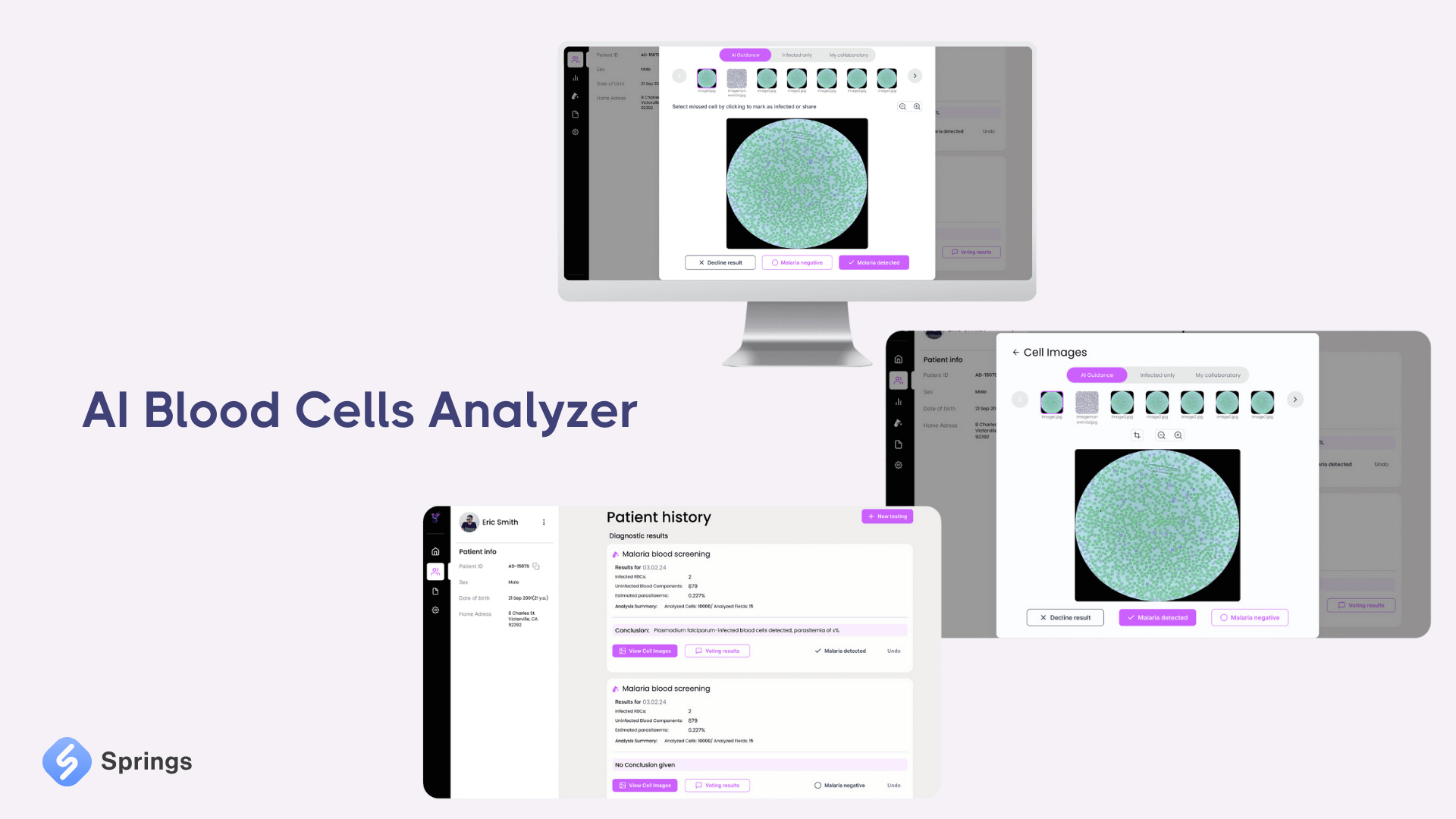
Our system's primary feature is Image Diagnosis, where cutting-edge deep learning technologies are employed to process medical images swiftly and accurately, enabling precise diagnostic outcomes. This capability enhances the efficiency and accuracy of medical imaging analysis, leading to improved patient care and treatment decisions.
AISight1
This cloud-based workflow solution is added to digital laboratory data systems. The powerful tool connects to on-site image scanners for visual data processing. AISight1’s application of computer vision in healthcare helps medical professionals identify biomarkers for disease severity detection, molecular prediction, and tumor cell quantification.
AvaSure Telesitter
With the help of this CV-based product, families and hospitals can provide around-the-clock nursing care. It eases the supervision of patients in need of hospital or home care. This example of medical computer vision solutions reduces the need for personal sitters, eases the workload of doctors and support staff, and provides automatic alerts.
da Vinci
The da Vinci system is a surgical marvel that combines CV and robotics. With its help, surgeons conduct deep-tissue research and perform operations using smaller incisions. This technique is possible thanks to a variety of remote-controlled surgical tools. The advanced system also provides surgeons with magnified HD images of surgical areas.
IDx-DR
With the help of IDx-DR solution, people can detect and identify diabetic retinopathy. This product does this by analyzing the patient’s retinal images. Ophthalmologists sometimes use the app during regular checkups to find early signs of the conditions. This combination of computer vision & medicine is used at the University of Iowa Health Care and Johns Hopkins.
Minuteful Kidney
People with kidney problems can use the Minuteful Kidney kit to check for diseases or conditions associated with the urinal and cardiovascular systems. This product instantly measures albumin to creatinine ratio and can be ordered by patients for home use. The smartphone app, which uses CV technology, analyzes urine samples through pictures taken.
Triton
The Triton blood loss monitoring system helps medical professionals find early signs of post-surgical bleeding. It analyzes images of surgical canisters and sponges taken via connected iPads in operating rooms. Triton’s assistance reduces the risks of patients dying due to wrongly calculated blood loss.
Smart Hospital
One of the most comprehensive examples of CV in medicine, the Smart Hospital is a FIWARE-based solution used at the Dr. Peset Hospital of Valencia. While its system automates various daily activities, the institution found a way to work computer vision into it. With its help, the hospital prevents overcrowding and ensures the safety of its visitors and staff.
The Future Of Healthcare & Computer Vision
The examples above show that the future of computer vision in medicine will significantly impact the field of AI in healthcare and its branches. The growing power of mainstream and tailored products will streamline live image recognition and object detection. Additionally, deep learning and predictive analytics algorithms will use more extensive and quality data to train.
Computer vision products will become more accurate and easier to use. Additionally, computer vision in healthcare settings will become more autonomous. They will provide instant analysis and action without waiting for data processing in the cloud. Continuous work on computer vision also opens new opportunities for affordable patient care applications and software.
The market for healthcare computer vision products will see more AR components that provide consultations and treatments shortly. This way, people won’t have to go to the hospital so often as online visits become more common. Computer vision technology will make diagnostics more accurate and timely while saving patients money on hospital bills.
Conclusion
Overall, computer vision has become a common sight in the medical field. The current application of computer vision in healthcare and the latest developments demonstrate that this technology will help improve the quality of service and public health delivery.
With remote diagnoses and instant image analysis, computer vision will bring high-quality medical care to all corners of the world. We will see more and more ML startups in 2024 and further years as AI/ML development is growing extremely fast.

